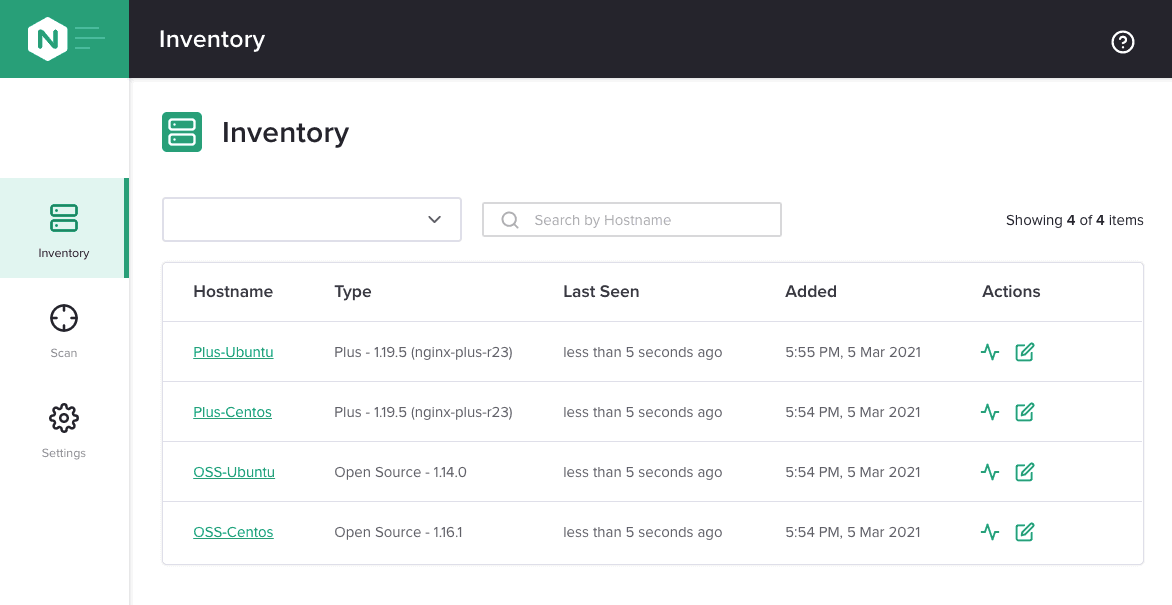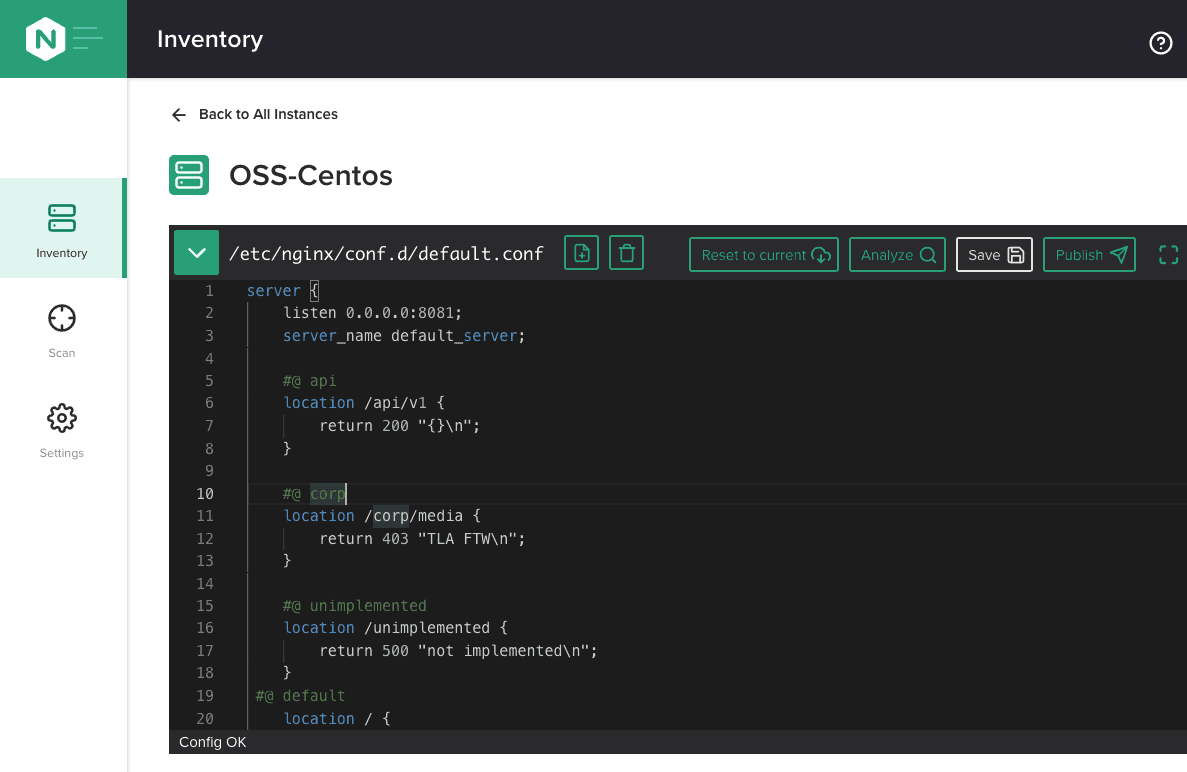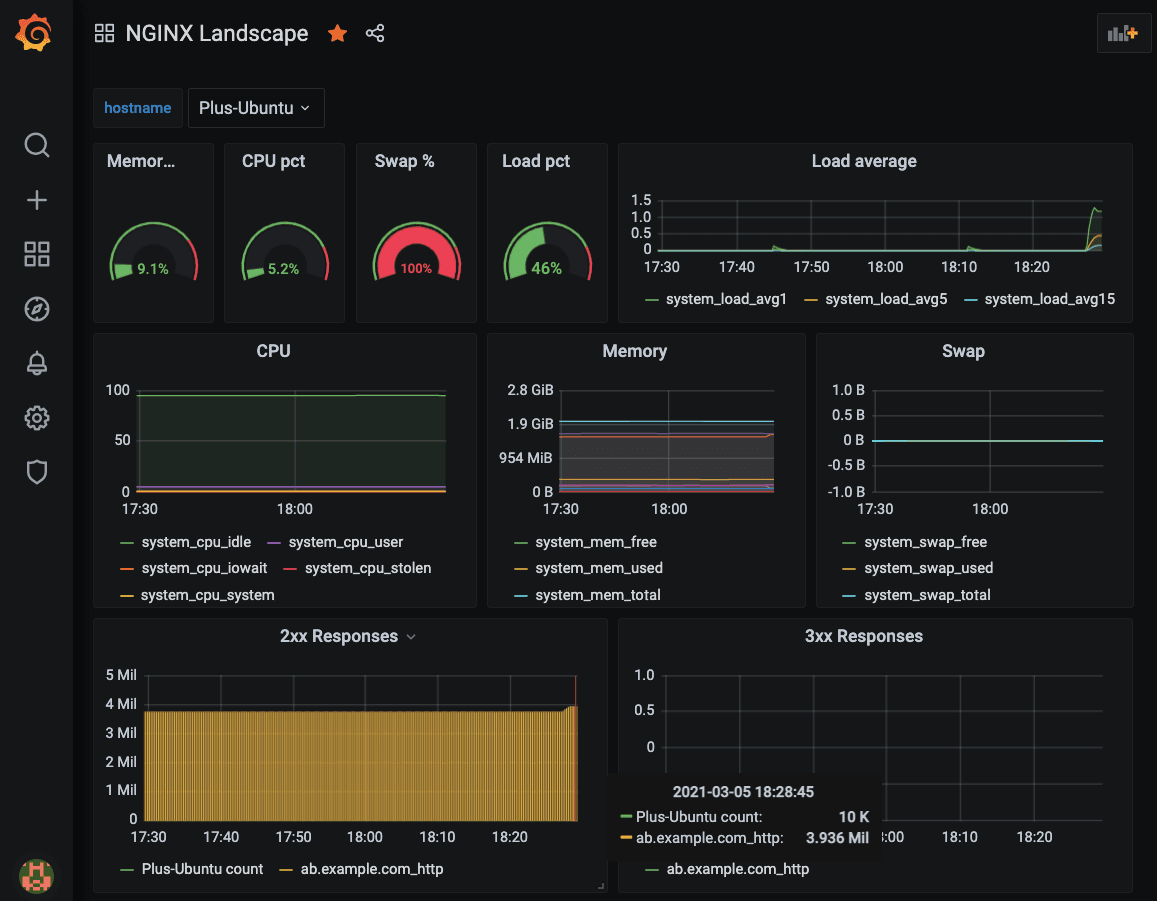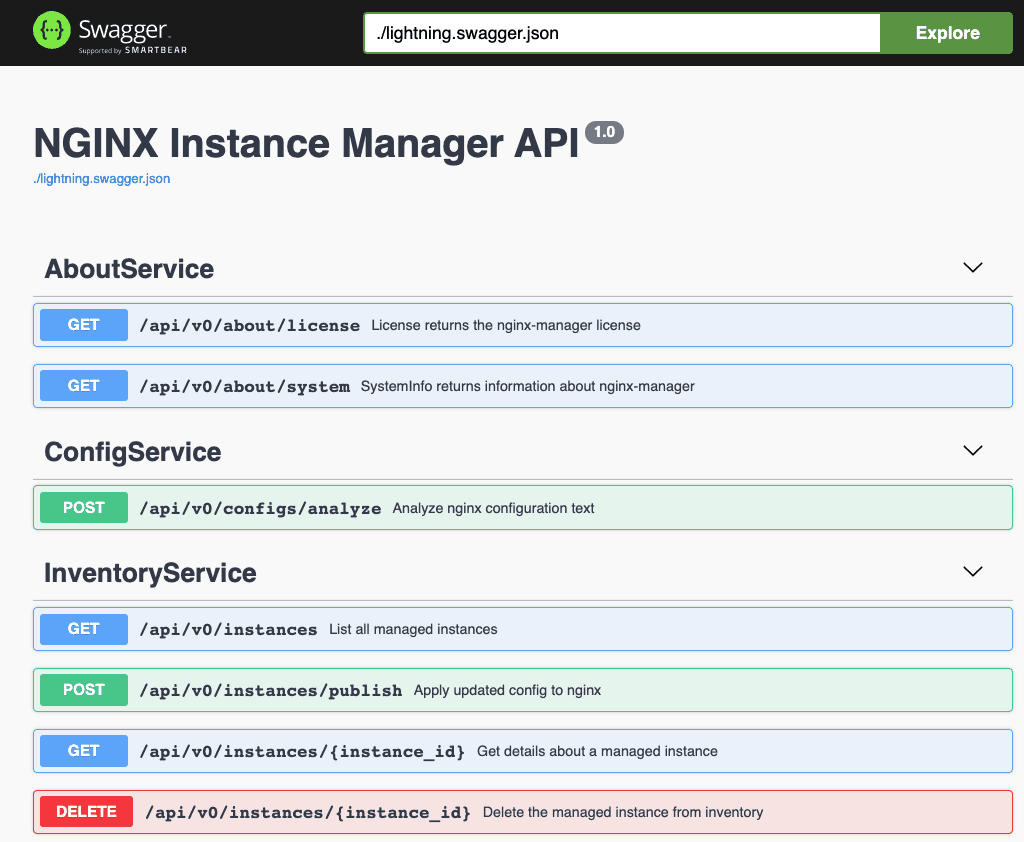NGINX is the popular web server that powers more than 400 million websites. But it’s more than a web server – as a software‑based all-in-one load balancer, web server, API gateway, and reverse proxy designed for cloud‑native architectures, NGINX is really a Swiss Army Knife™ that accelerates your IT infrastructure and application modernization efforts. This wide‑ranging, versatile functionality can, however, lead to many NGINX instances spread across the organization, sometimes with NGINX Open Source and NGINX Plus managed by different groups. How do you track all the instances? How do you ensure they have up-to-date configuration and security settings? That’s where NGINX’s latest solution comes in – NGINX Instance Manager.
NGINX Instance Manager simplifies NGINX asset management, configuration, and visibility. It is ideal for DevOps users who are NGINX experts and have a lot of experience with NGINX configurations. Let’s look at how NGINX Instance Manager can be beneficial for your organization.
NGINX Inventory Management
The first requirement for effective IT asset management – and security – is an accurate inventory of IT assets. With NGINX Instance Manager, you can quickly discover both NGINX Open Source and NGINX Plus instances. Some customers tell us it can be a challenge to keep track of all their NGINX Open Source instances – they suspect there are several thousand across the organization, but they don’t really know. With NGINX Instance Manager, there’s no need to stress about NGINX sprawl!

Ensure Compliance with Corporate Security Policies
Enterprises have strict security policies that prohibit running software or infrastructure impacted by Common Vulnerabilities and Exposures (CVEs). NGINX Instance Manager identifies NGINX instances that are running software versions impacted by CVEs. With this visibility, you can then upgrade the instances to a version with fixes for the CVEs.

Effortless NGINX Configuration Management
If you’re like many of our customers, some of your configurations have a good bit of rust on them. The Analyzer in NGINX Instance Manager scans your configurations automatically and makes change recommendations based on best practices gleaned from issues that our customer success team has encountered in customer production environments.
You can then use the built‑in Monaco Editor (native Visual Studio Code format) to implement the recommendations, as well as other changes you decide are necessary. With the Analyzer and Monaco Editor, NGINX Instance Manager makes it very easy to clean up old configurations.

Seamless NGINX Monitoring with Your Preferred Tool
Once you get visibility into NGINX instances, you need to monitor them to ensure high performance and robust security. With NGINX Instance Manager, you can forward operational metrics such as 4xx errors to your preferred monitoring solution such as Grafana or Prometheus. You can use the solution’s native alerting mechanisms to get notified about NGINX issues.

Automate NGINX Configuration and Maintenance
NGINX Instance Manager provides simple RESTful APIs that allow DevOps teams to automate all the features discussed above: instance discovery, configuration, and ongoing monitoring. You can easily integrate these tasks into your CI/CD workflows to boost DevOps productivity.

Want to give NGINX Instance Manager a try? Download a 30-day free trial or contact us to discuss your use cases.
About the Author

Related Blog Posts

Secure Your API Gateway with NGINX App Protect WAF
As monoliths move to microservices, applications are developed faster than ever. Speed is necessary to stay competitive and APIs sit at the front of these rapid modernization efforts. But the popularity of APIs for application modernization has significant implications for app security.
How Do I Choose? API Gateway vs. Ingress Controller vs. Service Mesh
When you need an API gateway in Kubernetes, how do you choose among API gateway vs. Ingress controller vs. service mesh? We guide you through the decision, with sample scenarios for north-south and east-west API traffic, plus use cases where an API gateway is the right tool.
Deploying NGINX as an API Gateway, Part 2: Protecting Backend Services
In the second post in our API gateway series, Liam shows you how to batten down the hatches on your API services. You can use rate limiting, access restrictions, request size limits, and request body validation to frustrate illegitimate or overly burdensome requests.
New Joomla Exploit CVE-2015-8562
Read about the new zero day exploit in Joomla and see the NGINX configuration for how to apply a fix in NGINX or NGINX Plus.
Why Do I See “Welcome to nginx!” on My Favorite Website?
The ‘Welcome to NGINX!’ page is presented when NGINX web server software is installed on a computer but has not finished configuring
